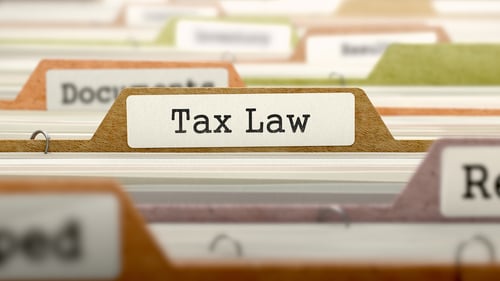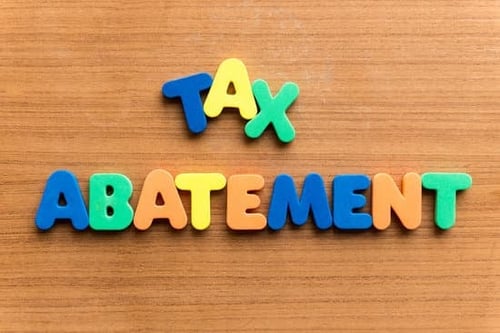Powell Tax Law Blog

Keep an Eye on These Important Tax Dates for the Remainder of 2022
Sometimes it is easy to think that “tax season” runs from January to the all-important April 15 date, which fell on April 18 this year thanks to the normal deadline falling on Emancipation Day, a holiday celebrated in Washington, D.C.
While it can be tempting breathe a sigh of relief after months of wearing your No. 2 pencils down to the numb or flinging your Turbo Tax discs across the room in frustration, you can not forget about the “Tax Man” the remainder of the year as there are some important Tax Dates to consider the rest of the 2022 calendar year.
Missing an IRS Deadline Can Have Financial Implications
Missing an IRS Tax Deadline can have financial implications for you or your business.
“If you miss a tax deadline, the IRS can hit you hard with penalties and interest,” says Kiplinger. “For instance, the standard penalty for failing to file your annual return on time is 5 percent of the amount due each month your return is late. If you pay your taxes late, the monthly penalty is 0.5 percent of the unpaid amount, up to 25 percent of what you owe, plus interest on the unpaid taxes.”
It is not just your annual return that could cause you a headache if important tax deadlines are missed.
“Similar penalties apply for missing other deadlines. And there could be other negative consequences for being late, like losing out on a valuable tax break,” says Kiplinger. “There’s at least one deadline in every month of the year, so pay close attention … we don’t want you to get in trouble with the IRS.”
Some IRS Dates Catch Taxpayers by Surprise
Some IRS dates can catch taxpayers by surprise, such as quarterly estimated tax dates.
“Our tax system operates on a "pay-as-you-go" basis, which means the IRS wants its cut of your income when you earn it,” says Kiplinger. “If you’re self-employed or don’t have taxes withheld from other sources of taxable income (such as interest, dividends, capital gains, alimony, or rental income), it’s up to you to periodically pay the IRS by making estimated tax payments.”
Since the first quarterly estimated tax payment came on April 18 in 2022, after the first quarter ended, it could be assumed that future quarterly payments fall in the month after a quarter ends.
The IRS, however, has other ideas with the second quarterly payment already due on June 15, some two weeks before the second quarter ended. For IRS purposes, your estimated tax payment should have covered only two months of income (April 1 through May 31)
Likewise, the third quarterly payment will be due on September 15, 2022, about two weeks before the third quarter ends. This tax payment covers income earned June 1 through August 31.
Finally, the fourth quarterly payment does not keep this pattern up and falls in December but is not due until January 17, 2023. For many, this likely will be your biggest quarterly tax payment cut to the federal government as it covers fourth months of earnings from September 1 through December 31.
Kiplinger reminds taxpayers that you could be hit with a penalty if you do not pay enough tax throughout the year.
“The penalty doesn't apply if you owe less than $1,000 in tax. You can also avoid the penalty if your 2022 withholding or estimated tax payments equal at least 90% of your 2022 tax liability, or 100% of the tax shown on your 2021 return (110% if your 2021 adjusted gross income was more than $150,000),” said Kiplinger.
Circle These Important IRS Tax Dates for 2022
Here are some important IRS tax dates to put on your calendar for the rest of 2022:
- July 11: Tips for June 2022 reported to employer (Form 4070)
- August 10: Tips for July 2022 reported to employer (Form 4070)
- August 31: New Mexico Wildfire and Straight-Line Wind Victims’ extended deadline for filing and payment obligations from April 5 to August 30
- September 12: Tips for August 2022 reported to employer (Form 4070)
- September 15: Estimated tax payment for third quarter of 2022 (Form 1040-ES)
- October 11: Tips for September 2022 reported to employer (Form 4070)
- October 17: File extended 2021 tax return (Form 1040) and pay tax due
- October 17: Withdraw excess IRA contributions in 2021 to avoid penalty if filing of Form 1040 was extended
- October 17: Contribute to solo 401(K) plan or simplified employee pension (SEP) plan for 2021 by self-employed if filing of Form 1040 was extended
- November 10: Tips for October 2022 reported to employer (Form 4070)
- December 12: Tips for November 2022 reported to employer (Form 4070)
- December 31: Contribution to employer-sponsored retirement plan for 2022 (401(k), 403(b), 457, or federal thrift savings plans)
- December 31: Required minimum distribution (RMD) by individuals who are 73 or older at end of 2022
Keep in mind that the filing extension dates also apply to small business owners who might have filed an extension using IRS Form 4868 for sole proprietors or for those filing for an extension as a partnership, S corps, and C corps with IRS Form 7004.
Businesses should also file their payroll withholdings and unemployment tax throughout the year either semi-weekly or monthly, depending on their filing status.
Another tax paid throughout the year by some businesses is an excise tax, which can be due monthly, quarterly, or annually. See IRS publication 509 (Tax Calendars) for more information.
If you have any questions regarding the IRS, tax laws or any other tax problems, do not hesitate to contact Powell Tax Law for a free consultation.







